Solid State Logic Xlogic Super Analog Channel
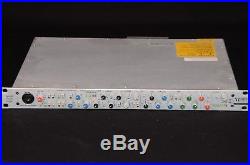

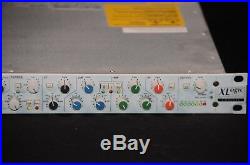


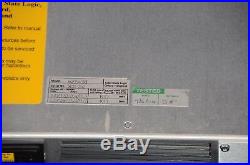
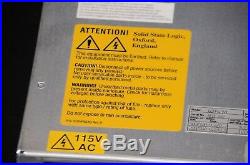
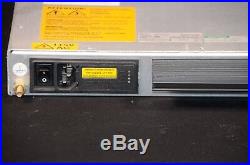
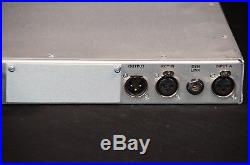


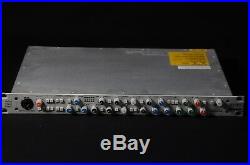

Ask anyone to name some of the major mixing console manufacturers and you can place a safe bet that Solid State Logic will come up very early in the list. The company's first big in-line studio desk was the SL4000B launched way back in 1977, but it was the release of the E series, with its revolutionary Total Recall facility, in 1981 that started the almost total global domination of the SSL console. The last twenty years have seen many significant advances in music console design, including SSL's bespoke Ultimation moving-fader automation system, and one of the first digital audio network systems, Soundnet. The company has also been very active in the audio for film and TV sound industries, initially producing a range of multi-format analogue broadcast and post-production consoles, such as the SL5000, SL6000 and the latest SL8000G. On the digital side, the Screensound system pioneered non-linear audio for video post-production, and was followed with the Scenaria and Omnimix, and then the A series Axiom, Aysis, Avant, and Axiom MT.
The latest and most sophisticated consoles are the new C100 and C200 models for on-air broadcast and post-production roles. But for many, the heart of the company remains its big music consoles, with the Superanalogue XL9000J and the latest XL9000K consoles defining the ergonomic and sonic peak of the analogue audio industry. The only problem is the relatively large cost of such a beast, combined with a changing music production process that increasingly tends not to require large consoles for recording anymore, and sometimes not for mixing either! With that in mind, SSL have finally responded to what has been a very long-standing request from many of its customers (and potential customers) to harvest the technology and superlative quality of the Superanalogue console and offer its elements in the form of compact outboard units.
As a result, SSL introduced four XLogic products at AES 2003 in New York a few months ago. These rackmount signal processing units are all direct descendants of the renowned XL9000K consoles, re-engineering the Superanalogue technology into a form better suited for use with high-resolution DAWs. The unit featured in this review is the flagship of the XLogic range, and combines mic preamp, EQ and dynamics in one unit, but the other models are a 5.1 stem compressor, a four-channel mic preamp (which can be remotely controlled), and the classic G-series stereo compressor. All four were developed alongside one another over about a year, and share an integrated power-supply design featuring a heavily mu-metal shielded mains toroid transformer. The Superanalogue Channel unit is derived directly from the circuitry employed in the XL9000K consoles, right down to the individual component values and the unique DC-coupled preamps (which mean that there are no capacitors in the direct signal path). However, the XL9000 console was designed in the early'90s and constructed using conventional leaded components. As a result, the channel circuit boards in the console are pretty big far too big to be easily re-engineered for a 19-inch rack case. So, although the actual circuitry is essentially identical, it has been implemented entirely with surfacemount devices and multi-layer PCBs partly to make it small enough to integrate within a 1U rackmount box, and secondly to enable cost-effective automated production. This re-engineering has also produced some useful advantages along the way one being the introduction of ground planes within the circuit board, which have improved the isolation and technical specifications of the various circuit stages.At an early stage of the design of the Superanalogue Channel, the engineers and product marketing team had to decide which elements of the original console channel strip to include and which to leave out, as well as what features to add to make the unit more useful as a stand-alone product. The result is a product which combines the XL9000K channel's mic/line preamp, four-band equaliser, high and low filters, and dynamics section (comprising both compressor/limiter and expander/gate), with an output driver. The preamp stage has been enhanced with a DI input facility, and a plug-in A-D card is under development. In order to dissipate heat from the internal circuitry without recourse to a potentially noisy fan, the Superanalogue Channel uses a protruding heat sink which extends the already considerable depth of the rack box. All of the main facilities found on the big console are retained in the XLogic Channel, including the ability to switch the equaliser between E-series and G-series responses, and to allocate the filters and/or equaliser into the dynamics side-chain.
The compressor can also be switched from RMS to peak sensing. The general control layout is very similar to the console, although the slightly larger panel real-estate has enabled buttons to be used instead of the pull-switches built into the knobs on the console. All of the buttons have associated LEDs to ensure the operational status is clear at all times. The Superanalogue Channel's stepped gain control allows accurate recall of gain settings.It is interesting to note that the quad mic preamp XLogic unit retains the continuously variable gain control, which uses a motorised potentiometer to facilitate remote control. This enables the mic preamps to be located close to the mics, while the preamp gain is controlled remotely either from a dedicated control panel, or from a suitably configured XL9000 console. The gain range has also been extended slightly, spanning +6dB to +72dB, rather than the console's +15 to +75dB.
There is 20dB of additional gain available on the output level control, as well. To accommodate line-level inputs, the 18dB pad can be switched in for a low-gain setting a gain setting of +18dB combined with the pad provides an input sensitivity of 0dBu. Just as on the console, the input impedance can be increased from a nominal 1.2k to 8.45k with the Hi-Z button, and the usual polarity reversal and 48V phantom supply buttons are also provided. The published specifications claim that the preamp input clips at a huge +26dBu, and noise and distortion is better than 0.003 percent. The bandwidth extends between 20Hz and 20kHz within 0.1dB and the -3dB point is 200kHz.
Equivalent input noise (with a 150 source) is -127dBu at maximum gain, and CMRR is better than 70dB at 10kHz. Although the front panel is arranged from left to right, with controls for the preamp, dynamics, filters, equaliser and output sections, the default signal path through the unit is actually preamp, equaliser, filters, dynamics, output section. However, comprehensive internal routing caters for several alternative arrangements.The filters can be repositioned after the preamp or in the dynamics side-chain; the dynamics section can be moved before the equaliser; and the equaliser can also be allocated to the dynamics side-chain. The dynamics section is a combined compressor/limiter and expander/gate design, sharing a common VCA (a THAT chip, in fact). The compressor section features just three rotary controls Threshold, Ratio and Release plus two buttons to select a fast-attack mode and peak sensing. The amount of gain reduction is shown on a five-LED meter the top three LEDs are yellow and show attenuation of 3dB, 6dB and 10dB, while the last two are red for 14dB and 20dB of gain reduction.
The Threshold control spans +10dB to -20dB on the panel (although the specifications state +10dB to -30dB) and the Ratio runs all the way from 1:1 (off) to infinity:1 (limiting), but there are no specific markings for other ratio values. There is no need for a gain make-up control, as this function is provided automatically by the Threshold control the lower the threshold, the more make-up gain is applied to keep the average level constant. The Release control ranges from 0.1s to 4s, but again without any intermediate values marked on the panel.
Although there is no programme-related adjustment of the release time, the attack time is programme dependent by default (between 3ms and 30ms) but can be switched to a fixed Fast setting of 3ms per 20dB of gain reduction. As standard, the compressor has a soft-knee or'over-easy' characteristic with RMS level sensing in the side-chain, but a Peak button changes this to a true peak-sensing mode with a hard-knee characteristic often a better combination for percussive instruments.The expander/gate which can be used simultaneously with the compressor/limiter is equipped with four rotary controls and two more buttons. The Threshold control spans the same +10dB to -30dB range, and the Release time constant the same 0.1s to 4s. In place of a ratio control, a button selects a 2:1 expander mode instead of the default infinity:1 gate mode, and a Range control sets the depth of gating or expansion, from zero to 40dB.
A Hold knob sets the delay before gating after the signal has fallen below the threshold (from zero to 4s), to avoid false triggering. The standard attack time is fixed to 1.5ms (per 40dB of gain reduction), but can be increased to 100µs by pressing the Fast Att button, for use with signals having fast initial transients. The amount of gain reduction is displayed on a second row of five LEDs (this time all green), sharing the same gain-reduction values. To the left of the dynamics section is a group of four buttons. The first switches the entire section in or out of the signal path.If required, the compressor/limiter section can be bypassed individually by turning the Ratio knob to its 1:1 setting, and the expander/gate disabled by setting the Range control to zero. Normally, the dynamics section follows the equaliser in the signal path through the XLogic Channel, but a second button moves the entire dynamics section ahead of the equaliser, if required. Another pair of buttons activates the (shared) rear-panel side-chain Key Input and the stereo link facilities. The former is balanced on an XLR input connector, while the latter uses a TRS socket (the tip and ring are commoned) to share side-chain control signals between multiple Superanalogue Channel units.
The equaliser section is identical to that in the XL9000 console, albeit with a slightly different panel layout to accommodate the horizontal nature of the XLogic box. The top and bottom sections are shelf designs, switchable to a bell response if required (with a fixed Q value of 2.5).The low section has a ±16.5dB range (with unity gain detent) and a turnover frequency adjustable from 40Hz to 400Hz. The top section has a massive ±20dB range (and unity gain detent) with adjustable turnover frequencies from 1.5Hz to 22kHz. In the default G-series EQ mode there is a small amount of dipping below the unity-gain level prior to the boosted part of the spectrum (or a small boost before the cut part of spectrum), designed to improve the selectivity of the EQ. However, by switching the equaliser to the alternative E-series mode, a slightly more gentle and smoother set of curves is provided.
Only the two inner EQ bands have continuously variable bandwidth, although the outer shelving bands can be switched to peaking responses. The two mid-range sections have ±20dB gain ranges (with unity-gain detents) and overlapping frequency ranges of 200Hz to 2.5kHz and 600Hz to 7kHz respectively. The bandwidth of each section is independently variable between Q values of 0.5 and 2.5 although in the G-series EQ mode the bandwidth decreases with higher gain settings, again to improve the selectivity. The E-series mode provides a constant bandwidth regardless of gain setting.
Three buttons in the centre of the EQ section switch the equaliser into the signal path, select the E-series EQ characteristics, and reposition the EQ into the dynamics side-chain for frequency-selective dynamics processing. The separate Filters section features simple high-pass and low-pass filters, each independently bypassable. The low-pass filter has a 12dB/octave slope with turnovers adjustable from 3kHz to 35kHz, while the high-pass section has an 18dB/octave slope and turnovers from 20Hz to 500Hz. By default, the filters are arranged after the equaliser in the signal path, but a button labelled Input enables this section to be repositioned immediately after the preamp stage (allowing out-of-band information to be removed before the signal reaches the dynamics section). A second button moves the filters to the dynamics side-chain, if required. Output Driver & A-D Option.The output section comprises a simple rotary control to adjust the output level over a ±20dB range, with a centre unity-gain detent. The output circuitry is fully balanced and floating (in other words not referenced to ground), and incorporates SSL's proprietary cable compensation design, which is claimed to allow the use of long connecting cables without degrading the frequency response. A seven-LED bar-graph meter (four greens, two yellows, and a red) normally shows the output level, in 6dB steps from +24dBu to 0dBu and then in 12dB steps of -12dBu and -24dBu.
A button (one of only three without status LEDs the others being the bell buttons for the high and low shelf EQ sections) switches the meter to monitor the preamp output level instead. Two other LEDs in this section are used to indicate when the unit is powered (the ubiquitous blue LED, I'm afraid), and when the optional A-D card is locked to an external clock reference. At present there is very little information available on this A-D card, but I understand that the user will be able to install it, and that there will be an external analogue input to access the right channel, the left channel being hard-wired to the XLogic output signal. There will also be various external clock inputs, as well as internal crystal clock options presumably configured with buttons on the rear panel. The XLogic signal path provides greater bandwidth and lower noise than current 24-bit and 192kHz converters, so it would seem reasonable to assume that this is the kind of A-D technology to expect.The optional A-D card is provisionally scheduled for launch around April 2004. Despite the relatively large number of controls on this 1U panel, the clever layout and use of slimline knobs make it easy to adjust everything without inadvertently nudging an adjacent control out of position. The presence of indicator LEDs on the majority of buttons also makes the current status fairly clear. Personally, I would have preferred it if the panel layout reflected the default signal path more accurately, but once familiar with the unit, this is of little practical consequence.
The XL9000J and XL9000K Superanalogue consoles have rightly acquired a reputation as the best SSL have ever produced, and all of the technology has been migrated very successfully into the XLogic unit. The Equaliser section is a well-equipped and powerful design, with plenty of range both in terms of gain and turnover frequencies making it very versatile and effective both for creative fine-tuning of a source's tonality and for controlling unwanted resonances with surgical accuracy. The facility to switch between the gentle E-series curves, or the slightly more peaky and responsive G-series curves is a very useful provision, and the separate filters mean that all four bands remain useful for tonal shaping, rather than having to control out-of-band frequencies as well.
The dynamics section is an equally versatile and effective package, and the ability to combine gentle expansion or hard gating with compression/limiting enables sources (and any background spill) to be controlled extremely well. This section is very simple to set up, with just a handful of controls, but surprisingly flexible in terms of the style of dynamic control, most notably thanks to the peak-sensing and hard-knee option.
No matter how good the equaliser and dynamics sections are on their own, it is inevitable that you will want to reverse their order sooner or later, and the XLogic Channel is pretty versatile in this context. It's a simple button press to have dynamics followed by EQ rather than EQ before dynamics, and the ability to move the filters up to the front of the signal path is extremely useful. So too is the way that either the filters, or the EQ section, or even both can be moved into the dynamics side-chain. Often, placing the filters there is enough, leaving the main EQ section for tonal tweaking of the main signal. Conversely, sending the EQ section to the side-chain allows for some very sophisticated frequency-conscious dynamics processing, while leaving the filters to control the signal's frequency extremes. However, recording channels like this rely on the quality and flexibility of their input sections, and the XLogic certainly doesn't disappoint. The provision of both front and rear input sockets makes interfacing to the unit very easy and flexible, and the addition of a dedicated DI instrument input will cater for those who wish to play their bass or guitar directly into a DAW through a clean and neutral front end. There is plenty of gain available regardless of input source, and the substitution of a switched gain control in place of a continuously variable one makes perfect sense in this application. As far as the overall sound quality is concerned, this is as close to the sought-after SSL Superanalogue sound as you can get without shelling out for an entire XL9000K console. The preamp section sounds big, with a full and solid bass combined with an airy open high end. The mid-range has an intrinsically clean and neutral quality which, combined with the extremely low noise floor and virtually non-existent distortion, provides a wonderfully'black' backdrop to recordings made in a quiet and well-controlled acoustic. The unit clearly has bags of headroom, and it doesn't sound strained even when driving the output hard, as can often be required to interface with professional digital recorders. The dynamics section can be set up to provide a reasonably transparent sound with gentle settings, taking advantage of that soft-knee characteristic, but by switching to the peak sensing mode the compressor becomes a lot more overt and aggressive sounding, ideal for adding attitude to drums, guitars or even vocals in the right situations. The external Key facility is also very handy, enabling the kind of key gating and auto-ducking facilities that are sometimes required in the odd elaborate situation. Equalisation is a joy it is so flexible and easy to use, and the subtly different character of the E-series and G-series slopes really does make a big difference in practice, often enabling just the right kind of sound shaping to be found. The first of only two practical disappointments for me was the lack of outputs and inserts. There is only the one main output, and it would have been nice had there been another output directly after the preamp stage, possibly in the form of an insert point.Although such facilities are rarely needed in the kind of application for which the XLogic has been designed, it does seem a little penurious on a product costing as much as this does! The other worry is the rather fragile-looking power-supply heat sink which extends horizontally from the rear of the unit. I'm glad SSL chose this route rather than adding a cooling fan, but the heat sink really does seem very vulnerable. If the XLogic unit is installed in a rack or flight case I guess this won't be too much of a concern, but if used au naturel then it can only be a matter of time before that heat sink takes a mighty whack, with the attendant damage to the internal circuit boards. Actually, I have one other small concern one which relates to the impending optional A-D board.
Other than an ADC Lock LED, the XLogic unit provides no other information about the status of the converter on the front panel. Presumably SSL are of the opinion that the A-D will always be clocked from a central master word-clock generator in the studio, and therefore there is no need to display the sample rate and clock source on the front panel of the Superanalogue Channel itself.
However, I'm not sure this is a valid assumption at all, and the lack of front-panel confirmation that the A-D is operating as you expect in terms of the chosen sampling rate and clock source may be a problem for some users. The item "SOLID STATE LOGIC XLOGIC SUPER ANALOG CHANNEL" is in sale since Thursday, September 27, 2018.
This item is in the category "Musical Instruments & Gear\Pro Audio Equipment\Preamps & Channel Strips". The seller is "wavstudios" and is located in Colorado Springs, Colorado. This item can be shipped to United States.- Model: XLOGIC
- Brand: Solid State Logic
